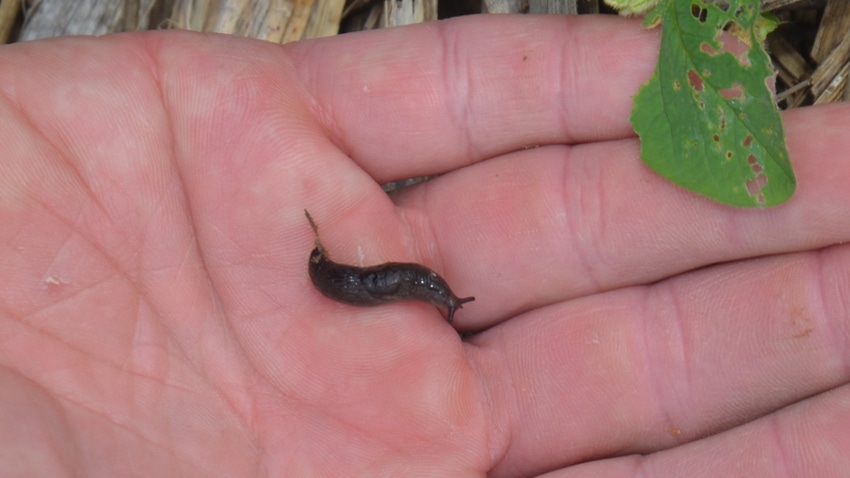
Going through an entire spring without hearing about slug damage in soybeans somewhere is unusual. The best you can hope for is to avoid hearing about slug outbreaks, where lots of fields are affected. In either case, you can also hope slugs don’t visit your fields.
“You really need more than hope,” says Steve Gauck, a regional manager for Beck’s, based near Greensburg, Ind. Beck’s sponsors Soybean Watch ’23. “There isn’t a lot you can do about them if they show up, but it pays to scout, and monitor conditions and swings in population early in the season.”
This is the eighth year Gauck has scouted and monitored the Soybean Watch field in central Indiana. He has found at least a few slugs in the field in most years. They have caused more than minor feeding damage only twice. In those two cases, replanting wasn’t necessary. Remaining populations were still 80,000 plants per acre or better both times.
Slug questions
Here are questions that have arisen most frequently about slugs, with Gauck providing answers:
What are slugs, and why doesn’t spraying control them? Slugs are not insects, and that’s why insecticides will not work. Slugs are part of the mollusk family, like snails. Materials that control slugs are expensive and not environmentally friendly. It’s usually not effective to control them with chemicals.
What does control slugs? Drier weather and warmer temperatures are the best deterrents. Once you find slugs in a field, all you can do is hope for drier, warmer conditions. Even then, they are good at hiding in residue near the row. Typically, we expect slugs to disappear by late May, but we’ve found them in Soybean Watch fields in late June and early July. By then, they may still feed on leaves.
When are slugs likely to show up? We see more slugs in cool, wet springs. This spring has been topsy-turvy — warmer than normal, then cooler than normal. If it levels out into a cool, wet period, it might favor slugs. We tend to see slugs in fields with residue on the surface, but in bad outbreak years, no fields are safe.
How can you manage residue to lessen chances for slugs? Residue management to help break it down over winter helps. Tillage that disturbs or buries residue helps too. With no residue on the surface, slugs have nowhere to hide. In Beck’s Practical Farm Research, we’ve seen an advantage for row cleaners helping with slugs by moving residue off the row.
What do you do about slugs in the spring? There is no in-field treatment. If a field or area is hit so hard that replanting is necessary, replant and hope! Sometimes, people have replanted twice in bad slug years. If you’ve decided to replant and weather is still cool, consider tilling to disturb residue.
What does slug damage look like? They can eat seeds and seedlings, above and below ground. So, you may find seeds that germinated and seedlings cut off by feeding. Slugs also feed on emerging seedlings. The biggest threat is thinning stands.
When should you replant? If you have 80,000 plants per acre with reasonably even spacing, leave the stand. Even 70,000 plants may be enough if weeds are not an issue.
Read more about:
SlugsAbout the Author(s)
You May Also Like




